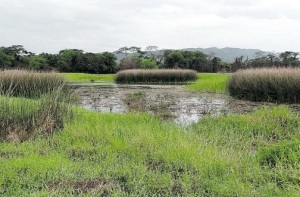There is a lot happening. Well, that’s an understatement! But here are my latest articles from Jamaica, the Caribbean and further afield, for your interest. Just click on the links for more information. P.S. I am looking forward to returning to C-CAM in Salt River next week!


Jamaica

- The Forestry Department warned on World Wetlands Day that Jamaica’s swamp forest has declined drastically in the last 15 years, while mangroves are doing a little better. What is swamp forest? This is an area that is regularly or permanently flooded with either fresh or salty water. The Black River Lower Morass is one example. Overall wetlands occupy less than two per cent of our land space; the destruction of swamp forest is largely due to tourism, roads and housing developments.
- Speaking of forests, the Forestry Department is organizing a series of public consultations on the draft National Forest Management and Conservation Plan. The first consultation took place in Rural St. Andrew, and subsequent ones will be in Portland (College of Agriculture, Science and Education/CASE in Port Antonio) on February 22 at 3:00 pm; Montego Bay (Wexford Hotel) on February 28 at 4:00 pm; Clark’s Town Primary School on March 2 at 4:30 pm; Clarendon College, Chapelton on March 7 at 4:30 pm; and the Jamaica Pegasus Hotel, Kingston on March 21 at 9:00 am. This is the future of our forests – and the lives that depend on them. Do go along, get information, make suggestions and ask questions!

- On Wednesday Wisynco Limited, the sole manufacturer and supplier of 70 per cent of styrofoam products in Jamaica, launched its new Eco-Foam material, which is a replacement for the styrofoam the company has been producing for years. A chemical additive will ensure that the product breaks down in a landfill or dump in nine months to five years. Senator Matthew Samuda, whose Private Member’s Motion last year called for a ban on styrofoam imports and single-use plastic bags, called this “a step in the right direction.” A committee on waste management, consisting of private sector members and scientists and chaired by Parris Lyew-Ayee, will be constituted “in a week or two,” Senator Samuda added. Note: It seems to me that the Jamaican private sector really needs to get on board with waste management, renewable energy and other environmental issues without delay. What are you waiting for? The Green Economy needs to be kick-started!
- There is funding for a small number of Caribbean youth to participate in a week-long workshop in Bogota, Colombia in April organized by the Global Youth Biodiversity Network. Deadline is March 10, so do hurry! The 2017 theme for the International Day for Biological Diversity (May 22) is Biodiversity and Sustainable Tourism. This year is the UN International Year of Sustainable Tourism for Development.
- In the Throne Speech on February 9, the Governor General announced that four projects to strengthen climate change adaptation and mitigation will be carried out under the ongoing Caribbean Community Climate Change Coastal Adaptation Project funded by the German Development Bank, for the reduction of climate change induced risks for Small Island States of the Caribbean. The organizations involved are the Urban Development Corporation, University of the West Indies, Caribbean Coastal Area Management Foundation and the Westmoreland Local Sustainable Development Programme. Note: Stay tuned for more information on climate change-related projects to be funded by the Inter-American Development Bank through the Environmental Foundation of Jamaica.
The Rest of the World

- Very discouraging news today: The U.S. Senate today confirmed President Donald Trump’s nominee to head the Environmental Protection Agency (EPA) Scott Pruitt, the Oklahoma-based Attorney General who has consistently opposed EPA regulations. This is very bad news for the environment and for President Obama’s efforts to mitigate the effects of climate change; Pruitt has reportedly already interviewed known climate change deniers for top jobs in the agency.

- A new report in Nature says that the world’s oceans, which provide roughly half of the oxygen we breathe, have lost 2 per cent of their oxygen since 1960. Most oxygen was lost in the Equatorial and North Pacific Ocean, the Southern Ocean, and the South Atlantic Ocean, where there are already “dead zones.” It’s not clear how much is due to global warming, but the rate of oxygen loss is expected to accelerate in the next few decades. And talking of dead zones, one created by nutrients (run-off from water treatment plants, agriculture and industry) forms in the Gulf of Mexico every summer, mostly from the huge Mississippi River Basin. Wow.

- There is a lot of concern about air pollution – not only in Jamaica, but worldwide. The World Bank is researching, among other things, the linkages between pollution, environmental health and productivity in cities under its Pollution Management and Environmental Health Program. Air, land and water pollution cause an estimated 9 million deaths per year, 95 percent of which occur in low and middle income countries. Check out the World Bank’s Sustainable Cities and Sustainable Communities blogs – some very interesting articles by various authors.

- What do you know about seagrass? Well, people worry about the loss of mangroves and coral reefs, but seagrass is often ignored. Yet it is also very important for the health of the marine environment – and humans. A recent study published in Science magazine shows that seagrass beds actually help remove harmful bacteria from the water, doing a good cleaning-up job. The bad news is that global loss of seagrass is estimated at around seven per cent annually since 1990 – it’s happening at a pretty fast rate in Jamaica, too, especially in tourism resorts. A report by the Nature Conservancy notes that along with tidal marshes and mangroves, seagrass meadows worldwide are also very important for storing carbon, a key factor in climate change. It’s called Blue Carbon.

- We may have missed this very big news, but China has just built the world’s largest solar farm, and is on its way to becoming the global leader in solar power. “The development of clean energy is very important if we are to keep the promises made in the Paris Agreement,” Xie Xiaoping, the chairman of Huanghe Hydropower Development said. Unlike President Trump and his EPA head, he is a convinced believer in climate change. Plus, the cost of solar power has plummeted in the past year or two. P.S. When is Jamaica going to get serious about renewable energy?

The composition of corporations isn’t the issue, rather that they take decisions different from those of individuals.
Not dispute on government dilly dallying: par for the course.
Interesting that even in so-called ‘upscale’ communities, one see little evidence of simple personal or communal forms of conservation, though my former complex had two compost heaps & some collected plastic bottles for recycling. The schemes that do exists for recycling plastic, eg at some schools, UWI, UTech, for St William Grant Park, etc still seem unknown to many.
Did we ever hear from NSWMA about their pilot program in various communities?
LikeLike
Remember, the ‘private sector’ is not just corporations, but includes individuals, who for a good part have little or no interest in conservation. Even without organized waste management at a national level, there is much that individuals can do to manage their own waste. But, many old habits die hard, and many Jamaicans are genuinely ignorant of many simple forms of conservation.
LikeLike
Well, corporations are made up of individuals. Plus, the Government has been paying lip service to the green economy for far too long. I think that was the point I was making. And I am not going to dismiss “many Jamaicans” are ignorant, and happen to believe that may be changing soon.
LikeLike